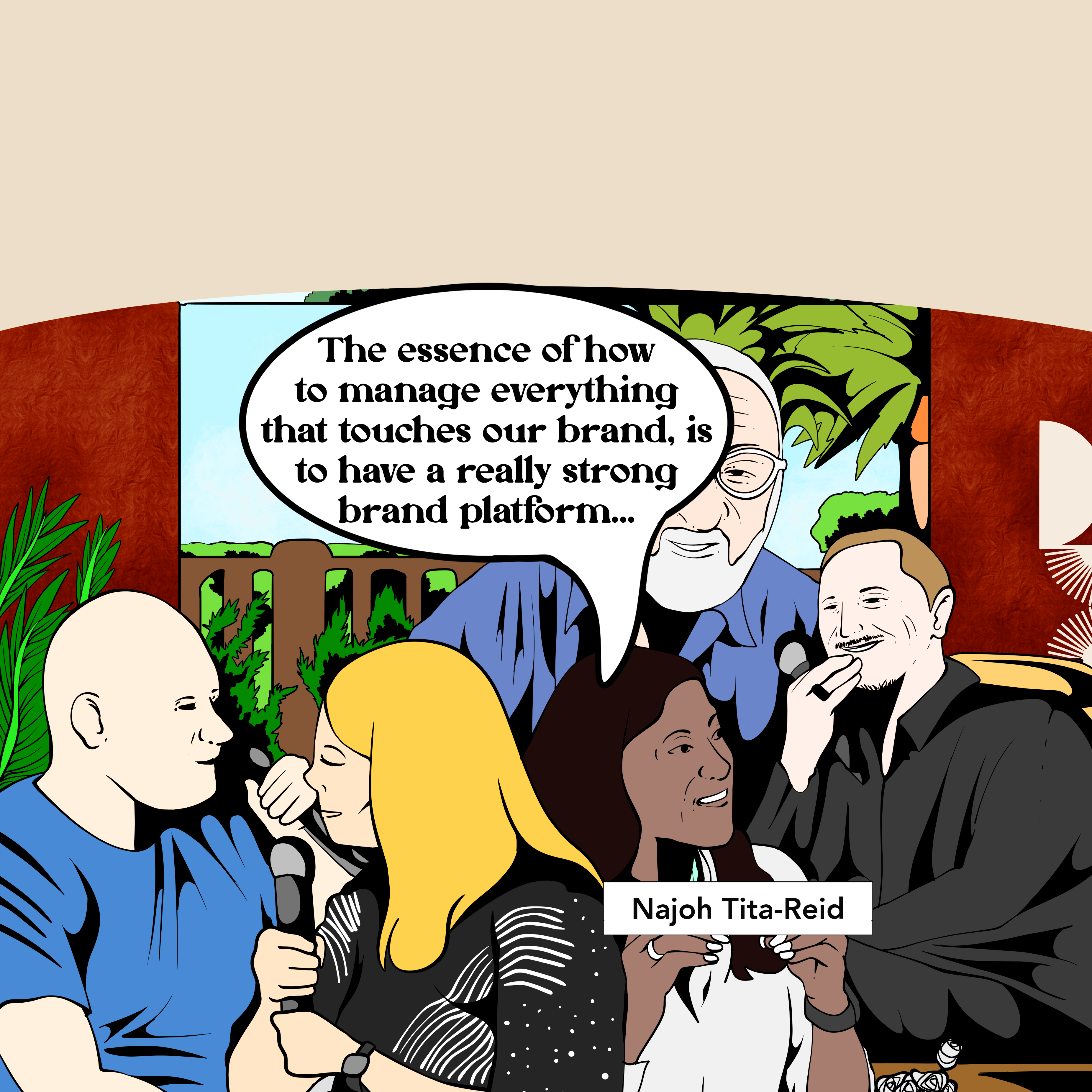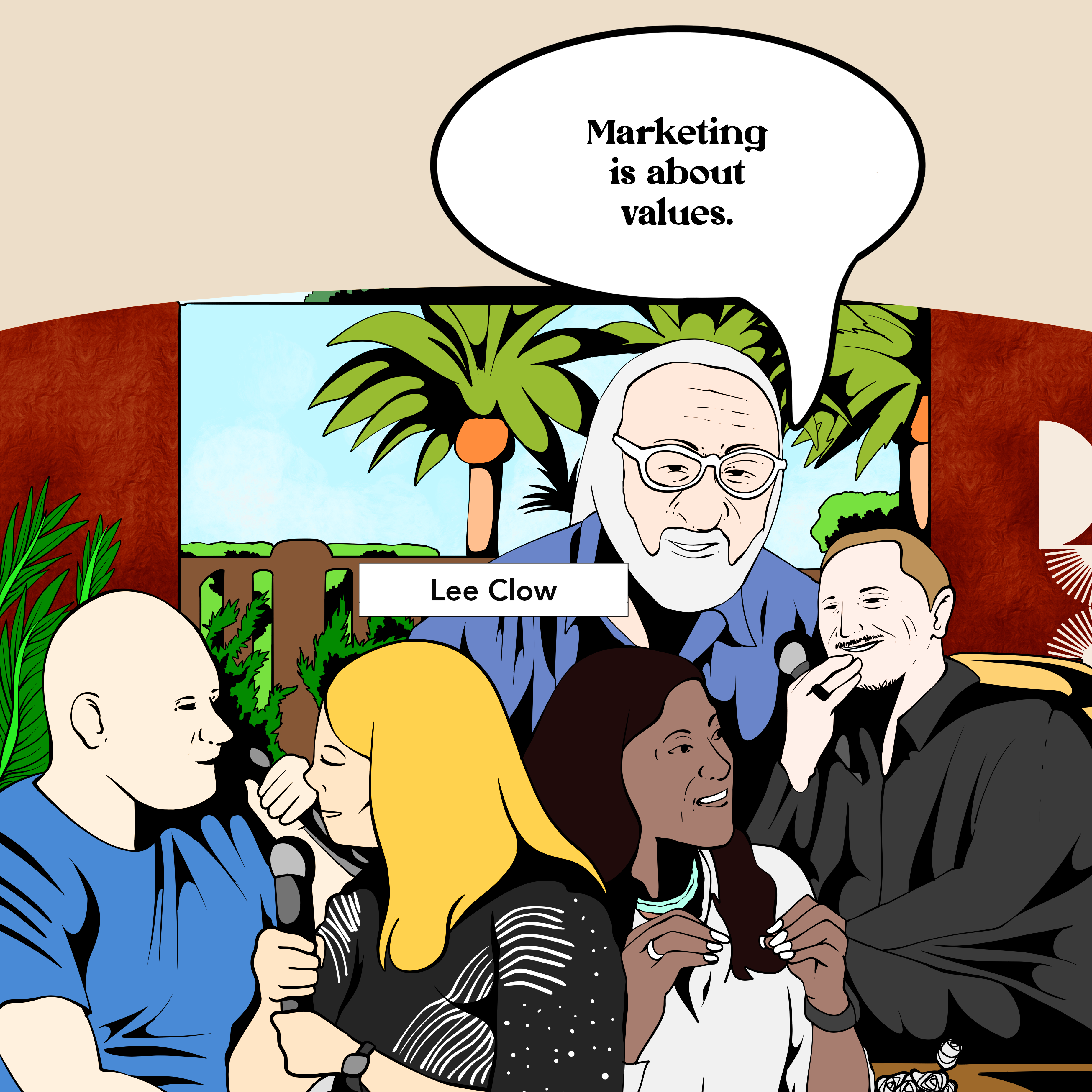

HOW TO FEED THE HUNGRY CONTENT MACHINE AND STILL MAKE BANK
Featuring
Najoh Tita-Reid, global CMO, Logitech
Mike White, CEO & co-founder, Lively Worldwide
David Droga, CEO Accenture Song
Lee Clow, Chairman Emeritus, TBWA\Worldwide
Anne Krogh, CMO, IKEA
Truth Bomb
You need a brand platform
Every American sees about 4,000-10,000 ads daily, but how many capture our attention? At Cannes Lions Festival 2022, Karen Nelson-Field of Amplified Intelligence shared results from a study of 130,000 ads across 1,150 brands. Her findings revealed that 85% of these ads fail to capture the necessary 2.5 seconds of attention for recall or buying intent.

The same study showed that marketing budgets with a heavier focus on performance marketing (60%) over brand marketing (40%) also didn't meet attention requirements. This indicates that share of voice data no longer reliably correlates with market share.
The core issue is the overemphasis on performance marketing. Marketers need to focus on quality over quantity and prioritize sales growth over follower counts. True growth in share of voice should accurately reflect market share.
Why do brands spend the majority of their budgets on performance marketing when studies show that people choose brands based on values and commitment? Brand purpose drives longevity, and brand affinity is driven more by what brands stand for than by what they sell.
Performance marketing is important, but it should be integrated with brand marketing. Creating omnichannel, end-to-end campaigns that activate brand promise can close the data integrity gap in media measurement, enhancing brand affinity across the buyer journey.
In this transformative era, with unpredictable customer behavior, marketing organizations must align creatively and philosophically. Brands must integrate brand and performance marketing to avoid being misunderstood.

The same study showed that marketing budgets with a heavier focus on performance marketing (60%) over brand marketing (40%) also didn't meet attention requirements. This indicates that share of voice data no longer reliably correlates with market share.
The core issue is the overemphasis on performance marketing. Marketers need to focus on quality over quantity and prioritize sales growth over follower counts. True growth in share of voice should accurately reflect market share.
Why do brands spend the majority of their budgets on performance marketing when studies show that people choose brands based on values and commitment? Brand purpose drives longevity, and brand affinity is driven more by what brands stand for than by what they sell.
Performance marketing is important, but it should be integrated with brand marketing. Creating omnichannel, end-to-end campaigns that activate brand promise can close the data integrity gap in media measurement, enhancing brand affinity across the buyer journey.
In this transformative era, with unpredictable customer behavior, marketing organizations must align creatively and philosophically. Brands must integrate brand and performance marketing to avoid being misunderstood.
Successful brand platforms like Apple’s "Think Different," StockX’s "Own It," and Logitech's "Defy Logic" inspire better engagement across both brand and performance marketing.
Najoh Tita-Reid, Logitech’s CMO, emphasized at the Contagious Villa at Cannes, “It’s hard to track everything that touches our brand, but the essence of managing it is having a strong brand platform. If anyone, across any platform, is using their own voice around our [Defy Logic] platform…I’m going to be pleased."
Big CPG companies, like global fast-food chains and beverage companies, often develop new intellectual property (IP) every quarter, discarding the old. This approach is unsustainable in the web 3 era, where consistent IP engagement is crucial. Similar to Disney’s model, introducing new characters thoughtfully across various media ensures deeper audience investment.

Creating end-to-end omnichannel campaigns that meaningfully activate your brand platform can grow market share and improve attribution models.
As David Droga, CEO of Accenture Song, stated at the Bloomberg Media Villa in Cannes, “Be a culture that solves, don’t be a culture that sells.” This sentiment, though missing from Accenture Song's Coinbase Superbowl ad, highlights a crucial point: brands must focus on solving real problems to resonate with audiences.

*********************
Far From Timid helps clients like IBM, Marriott, and Doctors Without Borders be at the center of culture. Let's talk.
*********************
Far From Timid's coverage of Cannes Lions 2022 for our magazine identified the top themes brands need to prioritize, supported by impactful quotes from inspiring sessions featuring leading brands and agencies. We created cross conversations, blending insights from different panels, because ideas don’t develop in echo chambers. Each portion of our series includes “truth-bomb” takeaways and showcases award-winning work, demonstrating that progress requires actionable ideology.



